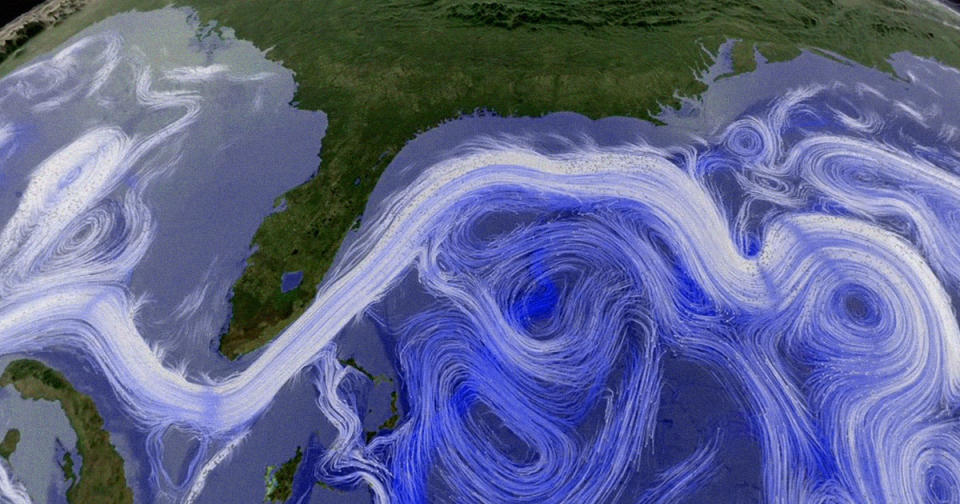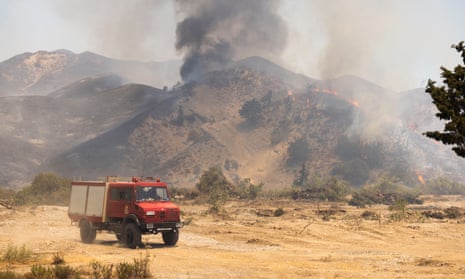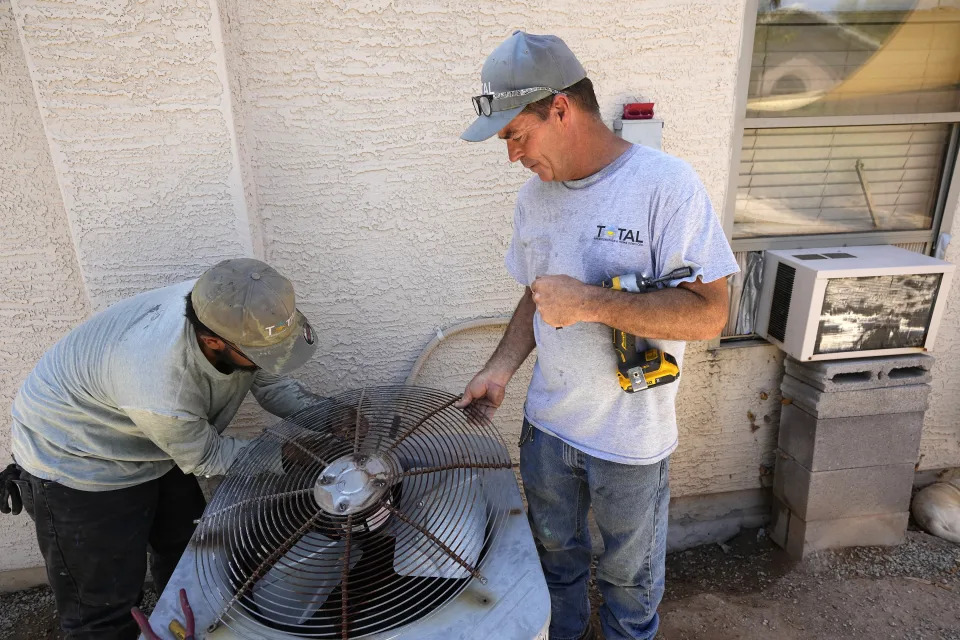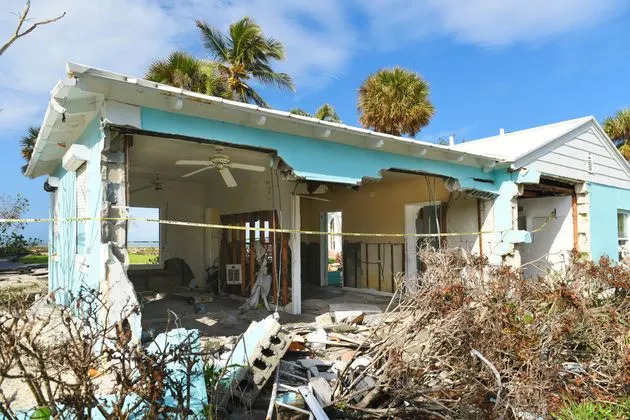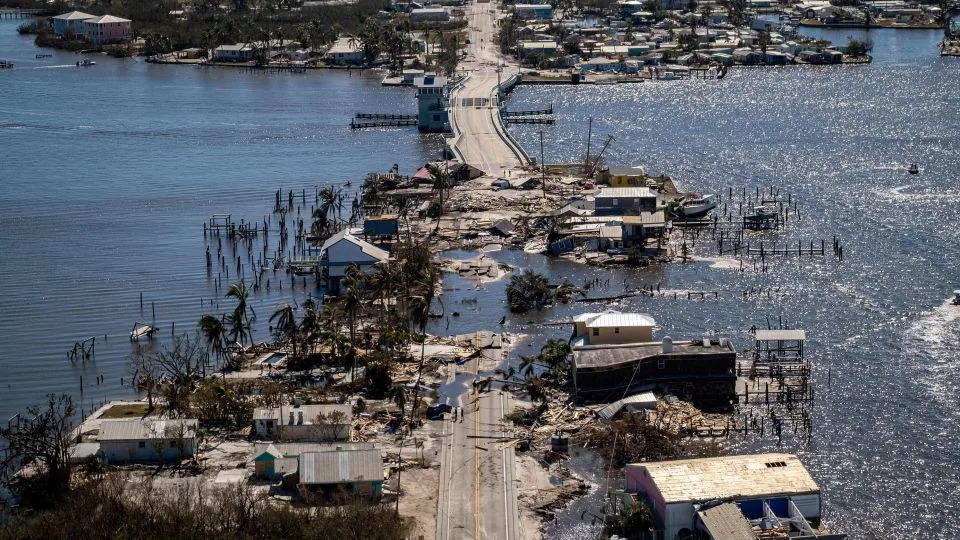CBS News
Is the Atlantic Ocean current system nearing collapse? Scientists weigh in
Li Cohen – July 31, 2023
A study out this week raised a dire warning about the future of the planet and humanity, suggesting a system of currents in the Atlantic Ocean could totally collapse as early as 2025 — a frightening scenario that was the premise for the 2004 film “The Day After Tomorrow.”
But some scientists say that while a collapse is possible, it’s just one of many potential scenarios that could unfold and is unlikely to occur this century.
The study, published in Nature Communications, focuses on the Atlantic Meridional Overturning Circulation, or AMOC, a system of ocean currents in the Atlantic Ocean. This system is part of a global conveyor belt as it circulates water from north to south in the Atlantic, helping disperse warm waters. This system, along with other ocean currents, is crucial to helping maintain the Earth’s climate — and scientists believe it is being affected by climate change, as melting ice alters the balance in northern waters.
The AMOC “is a major tipping element in the climate system and a future collapse would have severe impacts on the climate in the North Atlantic region,” the study says, adding that there has been other research in recent years indicating that its circulation is weakening.
“We estimate a collapse of the AMOC to occur around mid-century under the current scenario of future [carbon] emissions,” it says.
Peter Ditlevsen, a professor at the University of Copenhagen’s Niels Bohr Institute and the lead author of the study, told CBS News he believes it’s “most likely” the system could collapse in about 30 years, around 2057. In the study, the range for a collapse was estimated to be anywhere between 2025 and 2095.
But, he says, there’s an “uncertainty”: “You cannot be completely sure.”
That’s because measurements of the AMOC only go back 20 years, providing a small amount of data to work into configurations. So his team looked at records of sea surface temperatures and climate model simulations to try to predict the fate of the current system.
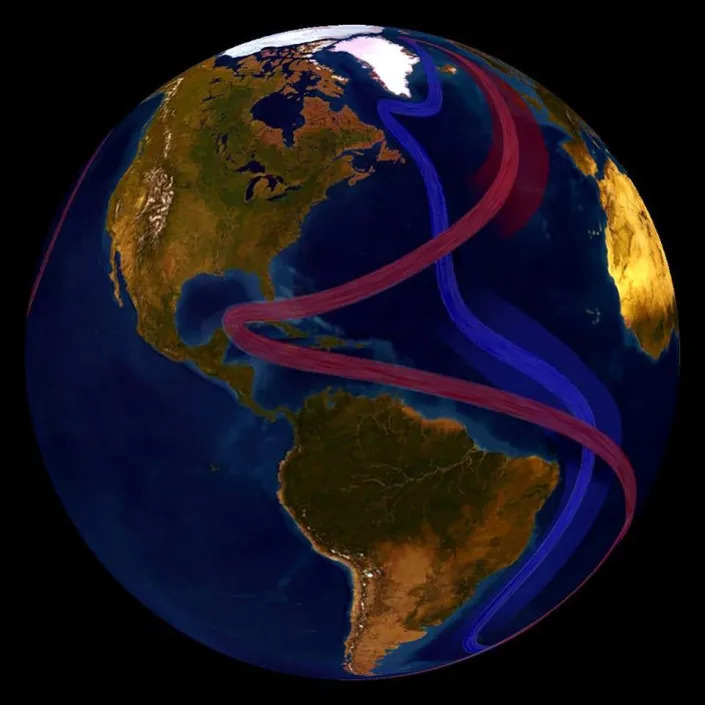
“We know that there’s a tipping point out there in the future. And that when you approach that tipping point, they start to be unstable in a very specific way,” Ditlevsen said.
But Marlos Goes, a scientist at NOAA’s Atlantic Oceanographic and Meteorological Laboratory, said the likelihood of this study’s results coming to fruition within this century “is very small.” Such a timeframe, he said, is just “one scenario … out of hundreds.”
According to state-of-the-art climate models and the U.N.’s Intergovernmental Panel on Climate Change, a group that works to assess the science behind climate change, “it’s not going to collapse in the 21st century at all,” Goes said.
“It may in the following century. It depends on the [emissions] pathways,” he told CBS News. “If the emissions go unabated the way they are going right now … that could be a potential force for this collapse. But the probability of that single scenario that they analyzed in that study is very unlikely.”
What is the Atlantic Meridional Overturning Circulation?
The AMOC is a long current cycle in the Atlantic Ocean that transports warm water across the globe. It’s an incredibly slow-moving system that takes roughly 1,000 years to move any given cubic meter of water through its entirety, according to NOAA.
It is part of the global conveyor belt, a system of deep ocean currents driven by temperature, salinity and the wind on the ocean surface. The belt begins where warm water from the Gulf is thrust into a cold atmosphere of the Norwegian Sea. From there, the now much cooler water sinks lower into the ocean and is carried south. The conveyor belt takes that cold water all the way down to Antarctica.
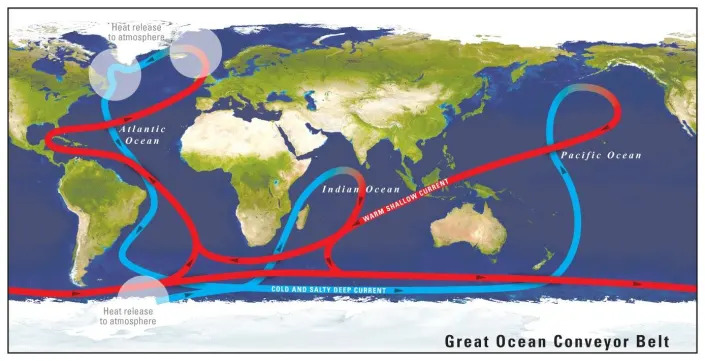
Is the Gulf Stream going to collapse?
The Gulf Stream is a warm ocean current that runs from the coast of Florida and up to North Carolina, where it then diverts and goes across the Atlantic. It’s also part of the Atlantic Meridional Overturning Circulation. The latest study makes no mention of the Gulf Stream, specifically, but because it is part of this system, it would be impacted by such a collapse.
However, Goes told CBS News that wouldn’t disappear. The Gulf Stream is primarily driven by wind rather than temperature and salinity, as the AMOC as a whole is, meaning it would still function.
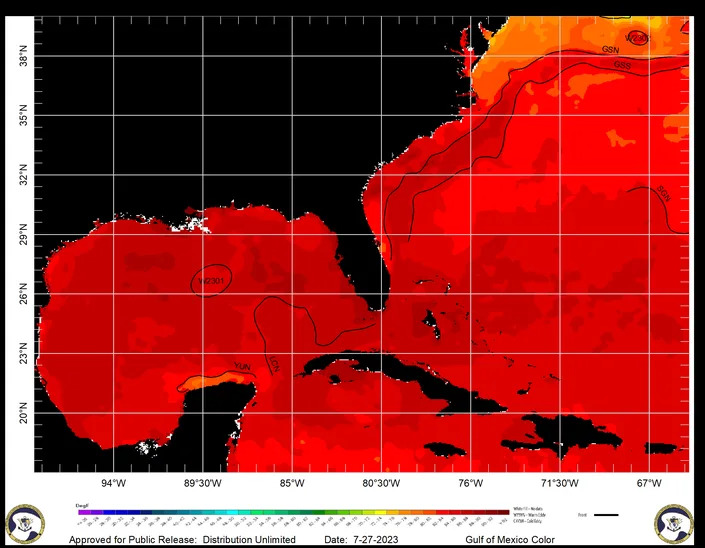
“We would have a Gulf Stream just if we had the wind, if we didn’t have this formation in the North Atlantic,” Goes said. “…So even if the AMOC collapses, we’ll still have a Gulf Stream, but it would be much weaker.”
What would happen if the AMOC shut down?
A collapse of the system was the inspiration for the 2004 disaster film “The Day After Tomorrow.” In the movie, ocean current systems stopped because of global warming, triggering another Ice Age.
But Ditlevsen said, “That’s not gonna happen.” The principle of it, however, is the same, he said.
“You get colder Europe, northern Atlantic region, which is maybe not nice for us living in Scandinavia because it will be more similar to what’s going on in Alaska,” he said.
“But worse is that, the heat that’s not coming here stays in the tropics, heating them even more,” he continued. “The livelihood of people in the tropics can be severely threatened by this. … These are climate changes that are going to happen very fast.”
The AMOC won’t collapse just yet, some say — but it is slowing
Even though Goes says the chances of the AMOC collapsing within the next few decades are low, the current system is at risk. In 2021, another study found that the system is the weakest it’s been in at least 1,600 years. Researchers found that the current has slowed down an “unprecedented” amount — 15% since 1950.
Other research has found that it could be reduced up to 45% within the next 70 years or so.
Goes said that even just a slowdown of the currents, and not a total collapse, could impact people around the world.
“Generally, when the AMOC weakens or collapses, you have a cooling of the North Atlantic because this heat wouldn’t be carried further north, and there’s a warming of the South Atlantic. This would shift the precipitation patterns further south,” he said. “And that could influence all the sub-Sahara, the African and South American continents in the tropical bands. It would have influence on the storms in the North Atlantic, in Europe.”
But it would also release even more carbon dioxide into the atmosphere. The ocean absorbs 90% of the carbon dioxide from the atmosphere, and without the current, the ocean won’t be able to absorb as much, Goes said, a situation that would only add to the already rampant global warming the planet is facing. It would also increase sea levels along the U.S. coast.
Urgent action could stop a slowdown
A drastic change or shutdown of the AMOC wouldn’t necessarily be detectable right away, Goes said. In fact, it could take 40 to 50 years to emerge.
“By the time we detect that, it will be too late,” he said. “We really need to act now. This is one of the tipping points of the world.”
Once a tipping point such as a slowdown or shutdown of the AMOC is passed, it could cause a cascade of impacts that could cause “irreversible and severe changes in the climate system,” according to the Organization for Economic Co-operation and Development. Even though a full collapse of the AMOC within the next few decades isn’t probable, it is possible, Goes said, and it could come with high risk.
Scientists are continuing to monitor the system to learn what they can about its current state. But to help prevent a continued slowdown or a potential full shutdown, both Goes and Ditlevsen agreed that global emissions must be reduced drastically. Those emissions, largely from the burning of fossil fuels, are trapping heat in the atmosphere and causing sea ice to melt. When that ice melts, it adds fresh water to the AMOC, disrupting the salinity and temperature it relies on to move.
“If we stop our emissions, it will not collapse,” Ditlevsen said. “The disturbing part about this study is that we have to react much faster than we perhaps would like to do. … It’s yet another wake-up call or warning sign that we have to react faster than we do.”

